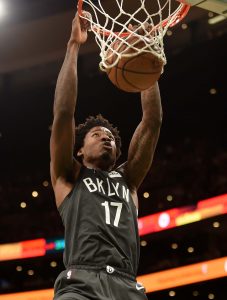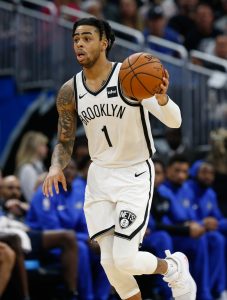Every week, Hoops Rumors takes a closer look at players who will be free agents or could become free agents next offseason. We examine if their stock is rising or falling due to performance and other factors. This week, we turn our attention to the Atlantic Division:
Terry Rozier, Celtics, 24, PG (Up) – Signed to a four-year, $8.8MM deal in 2015
Rozier has struggled most of the season after his breakout performances in last season’s playoffs, when he averaged 16.5 PPG, 5.3 RPG and 5.7 APG while subbing for an injured Kyrie Irving. So why is his stock up? Irving’s commitment to the organization is shaky at best, which makes restricted free agent Rozier a major insurance policy. Rozier would clearly benefit from becoming a starter in Boston or elsewhere. He has averaged 14.5 PPG, 5.8 RPG and 5.7 APG the last six games in which Irving missed and he played. He rarely turns the ball over, which makes any coach happy.
 Ed Davis, Nets, 29, PF (Up) – Signed to a one-year, $4.45MM deal in 2018
Ed Davis, Nets, 29, PF (Up) – Signed to a one-year, $4.45MM deal in 2018
Davis consistently stays in a team’s rotation by knowing his role and his limitations. He’s told to rebound and play defense and he does those well. Davis is averaging a career-high 8.5 RPG while playing pretty much the same minutes he logged for Portland the previous three seasons. He sports a strong 1.7 Defensive Box Plus/Minus rating, according to Basketball-Reference. He’ll continue to find work as a second-unit fixture who doesn’t mind letting his teammates do all the scoring.
Mario Hezonja, Knicks, 24, SF (Down) – Signed to a one-year, $6.5MM deal in 2018
Hezonja had a second chance to shed the label of ‘bust’ by signing with the rebuilding Knicks after three forgettable seasons with Orlando. Perhaps his label should now read ‘colossal bust.’ Hezonja is destined to go down as one of the worst top-five picks in the last two decades. In 46 games, Hezonja has averaged 7.6 PPG on 39.7% shooting and 3.7 RPG while compiling more turnovers than assists. He hasn’t played since mid-February due to a knee injury or coach’s decision. It wouldn’t be surprising if the Croatian native spends the remainder of his career in Europe.
Boban Marjanovic, 76ers, 30, C (Down) — Signed to a three-year, $21MM deal in 2016
Marjanovic has been sidelined recently by a knee injury. He’s been highly productive and always entertaining when he plays. The 7’3″ center is a throwback to another era when slow-footed giants were more prevalent in the league. Marjanovic is impossible to stop when he gets the ball down low but his lack of mobility make it tough to play him for long stretches. The happy-go-lucky Marjanovic is a fan and locker-room favorite who might get a short-term deal as a third-string backup but it’s doubtful he’ll receive another three-year offer.
Danny Green, Raptors, 31, SG (Up)– Signed to a four-year, $40MM deal in 2015
Green was the ‘other’ starter in the blockbuster Spurs-Raptors trade this offseason. Green isn’t an All-Star talent like Kawhi Leonard or DeMar DeRozan, but he’s a solid NBA starter on one of the top teams in the league. He gained that status in San Antonio and nothing’s changed north of the border. Green has taken two-thirds of his shots from beyond the arc and made 43.3%, his best long-distance average since the 2011/12 season. His Defensive Box Plus/Minus rating has dropped this year but he’s still a plus 1.2. Green’s 3-point shooting alone will guarantee him a nice payday this summer.
Photo courtesy of USA Today Sports Images.
